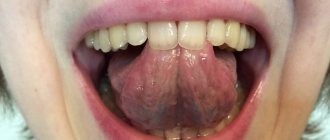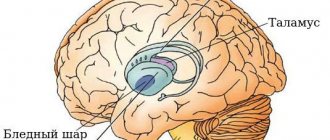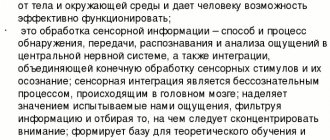Dyslalia and dysarthria are very similar speech development disorders. In both cases, there is a defect in sound pronunciation, often in the same phonemes
It is very rare that an ordinary person, simply by reading about these disorders on the Internet, will correctly distinguish one from the other. Meanwhile, it is important to know how dyslalia differs from dysarthria, since treatment and correction in both cases are individual.
What disorders occur only with dysarthria?
In differential diagnosis, dysarthria differs in leading features. So, this disease is characterized by the following symptoms, which do not appear with dyslalia:
● neurological pathogenesis, expressed in the form of asymmetry of the face, tongue, open mouth with lip paresis, smoothed nasolabial fold
● motor skills disorders - general, fine, speech
● voice defects - constriction, dull sound, slurredness (“mess in the mouth”)
● reduced speech activity
● deviations in diaphragmatic speech breathing, which causes prosody and automation of phonemes
● sleep disorders
● problems with memory capacity, instability of attention, intelligence, history of mental retardation, mental retardation.
● weak activity. People with dysarthria are usually slow and have difficulty switching from one activity to another.
● behavioral disorders - frequent mood swings, psychosis.
What is the difference between dysarthria and dyslalia?
According to its etiology, dysarthria is not an independent disorder. Its appearance is associated with congenital or acquired organic lesions of the central nervous system. It manifests itself in injuries, cerebral palsy, neuroinfections, problems with cerebral circulation, tumors, asphyxia, Rh conflict with the mother, and so on. Dyslalia is not associated with organic matter. It occurs:
• in somatically weakened children
• with pedagogical neglect
• with abnormal development of the articulatory apparatus.
In the case of dysarthria, the pronunciation and prosodic aspects of the sound flow suffer, omissions and phonemic substitutions are observed. With dyslalia, problems are expressed only in sound pronunciation.
DIAGNOSTICS. Comparative analysis of alalia and speech underdevelopment in mental retardation
Comparative analysis of alalia and speech underdevelopment in mental retardation. Comparative analysis of alalia and aphasia. Comparative analysis of alalia and dyslalia, rhinolalia, dysarthria; alalia and temporary delay in speech development of a functional nature.
Children with speech impairments are characterized by a smaller amount of information and ideas about the environment compared to normally developing children, insufficiency of sensory, temporal and spatial representations, a decrease in the ability to remember visual and auditory material, insufficient focus and concentration of attention, a decrease in the level of mental generalizations, and insufficient skill. build conclusions, establish cause-and-effect relationships, etc. These children have poorly developed articulatory motor skills and fine motor skills of the fingers. Children with severe speech impairments need complex, differentiated and holistic influence on all aspects of development and personality.
With motor alalia (children with such a disorder make up the vast majority in the combined group of children with general speech underdevelopment), the immaturity of the entire speech system is associated with underdevelopment of the brain.
If, with aphasia, speech disintegrates, and with dysarthria, the innervation of the speech apparatus is disrupted, then the main difference between alalia and other speech disorders is that speech is not formed at an early age (up to 3 years).
With sensory alalia, the main symptom is a violation to one degree or another of the understanding of addressed speech: in some cases the child does not understand speech at all, in other cases he listens to the sound of speech, understands individual words, and in milder cases understands simple addressed speech, but he phonemic perception is not sufficiently formed, there are no subtle acoustic differentiations, there is no higher acoustic analysis and synthesis. This is due to the immaturity of the cerebral cortex. Sensory alalia is less common than motor alalia. Speech therapy work is complex, the prognosis is quite uncertain, especially in severe cases. Diagnosis of sensory alalia is difficult; often the conclusion is made tentatively. Further study of children with sensory alalia and the creation of an integral system of correctional and educational work with them is an urgent problem in the theory and practice of speech therapy.
The child has no or severely impaired speech in all its components: vocabulary, grammatical structure, coherent speech, sound pronunciation. Speech in a child with alalia appears late, develops slowly and is always defective. The degrees of underdevelopment of speech vary: from complete speechlessness to not pronounced underdevelopment. Difficulties in word formation and inflection are noted. Underdevelopment of speech in such a child leads to secondary underdevelopment of intelligence; mental retardation due to speech underdevelopment is detected.
But at an early age, signs of alalia may be similar to manifestations of mild dysarthria. Therefore, there is a differential diagnosis based on speech and non-speech manifestations.
In children with mild dysarthria, sound pronunciation defects are caused by a violation of the motor level of speech production. In children with alalia, this level is completely or relatively preserved and potentially allows them to carry out an articulatory act. With dysarthria, only one of the subsystems of the language is primarily affected - the phonetic one (in this case, only an indirect negative effect of violations of this subsystem of the language on its other subsystems is possible); with alalia, as a rule, the entire system of the language (phonemic, grammatical and lexical subsystem) is upset. Secondary lexical and grammatical disorders in dysarthria are characterized by a delay in formation; in alalia, atypical development of these language subsystems is noted. In children with dysarthria, sound pronunciation disorders are caused primarily by disturbances in phonetic (motor, anthropophonic) operations. Disorders in the pronunciation of sounds in children with alalia are explained by a violation of the production of phonemic operations. According to V.A. Kovshikova (1996), with alalia, sound substitutions predominate, and with dysarthria, distortions predominate. Children with alalia have distortion of a small number of sounds that are predominantly difficult to articulate. For the compared group of children, distortion of a large number of both complex and simple sounds is typical. Substitutions of both articulatory complex and simple sounds are characteristic of alalia. Children with dysarthria allow substitutions of predominantly articulatory complex sounds, while only substitutions of sounds are not noted in their speech. Interchanges of sounds are relatively common in children with alalia and relatively rare in dysarthria. With alalia, omissions of both articulatory complex and simple sounds predominate; children with dysarthria predominantly omit articulatory complex sounds; the presence of only omissions of sounds is not typical for them. In the speech of children with alalia, repetitions and rearrangements of sounds are quite frequent, while in dysarthria they are relatively rare. In the phonetic subsystem, children with a mild degree of dysarthria are characterized not only by disturbances in the pronunciation of sounds, but also by disturbances in prosody, while in children with alalia, prosody is usually preserved.
Non-speech signs. A significant proportion of children with dysarthria have pronounced paralysis, paresis and apraxia of the organs of the articulatory apparatus; in children with alalia they manifest themselves mainly to a weak degree, and in some they are absent. Many children with alalia successfully perform with their articulatory organs all or most non-speech movements that are similar to the elements of movements that are included in the articulatory sound complexes. Children with dysarthria do not perform most of these movements, or the quality of their performance suffers. In addition to those mentioned, they often exhibit other disorders of the nervous system and psyche.
With alalia, not only speech is disrupted, but disturbances in other mental processes are also noted. Such a child has insufficient attention, perception, memory, disturbances in the emotional-volitional sphere, and behavior. Children are stubborn, capricious, and negative. Increased sensitivity (sensitivity), tendency to tears, and motor restlessness are often noted. The speech and personality characteristics of a child with alalia are associated with underdevelopment of cells in the cerebral cortex in certain areas (most often the frontal lobe of the left hemisphere). In most cases, it is difficult to speak with certainty about the localization of underdevelopment, since the child has minimal brain dysfunction without a clear localization of underdeveloped brain cells. Speech therapy work in such cases is carried out against the background of treatment aimed at increasing the performance of immature cells of the cerebral cortex and at their fastest maturation. Children's hearing is preserved, and their intelligence is not primarily affected. In severe cases, secondary mental retardation is observed.
Due to underdevelopment of understanding, the child himself does not speak or speaks little and poorly. The reason for this is a violation of acoustic attention and perception.
In its pure form, motor and sensory alalia are relatively rare; motor alalia with a sensory component or sensorimotor alalia are more often diagnosed.
Of great theoretical and practical interest is the differential diagnosis - differentiation - of a child with sensory alalia and a child with reduced hearing (deaf or hard of hearing). According to the latest scientific data, with sensory alalia there may (or may not be) some hearing loss, but it is not the leading one in the picture of the defect: the child does not understand the speech addressed to him not because he does not hear, he does not understand what definitely hears.
Testing hearing in a child with sensory alalia is difficult. It is recommended to conduct several (8-10 times) instrumental hearing tests (audiometry), and when comparing audiograms, focus on the most frequent matches.
Several diagnostic indicators have been established to distinguish between a child with sensory alalia and a hearing-impaired child. These include the following:
- a hearing-impaired person has a constant threshold of perception (at different times of the day in different conditions he hears the same), and a child with sensory alalia has a flickering inconstancy of the auditory function: sometimes he hears and understands a quieter sound, sometimes he does not perceive a louder sound. Inconsistency of audiometric test results
- indicates impaired performance of immature cells of the cerebral cortex. Immature brain cells are very fatigued, the processes of higher acoustic analysis and synthesis cannot proceed normally in them, the processes of excitation and inhibition cannot alternate, therefore, under different conditions, different indicators of auditory perception are revealed. Increasing (strengthening) the sound volume improves the perception of a hearing-impaired child. A child with sensory alalia does not react to loud, and especially super-loud sounds; The child perceives quieter, calmer sounds better than sounds of increased volume, which cause extremely protective inhibition in immature brain cells, the brain seems to spare itself, turning off from work;
- People who are hard of hearing hear better when using a hearing aid. A child with sensory alalia cannot use a hearing aid: he complains of pain in the ears and head; increased sounds become an unpleasant irritant for him. With sensory alalia, in some cases there is hyperacusis - increased sensitivity to quiet sounds that are indifferent to others (the noise of crumpling paper, water dripping from a tap, etc.). A person who is hard of hearing is indifferent to such quiet sounds and does not react to them, but a child with sensory alalia experiences unpleasant sensations. By the way, this once again emphasizes the preservation of hearing in children with alalia.
The voice of a hearing-impaired person lacks sonority, flight, it is quiet, dull, while a child with sensory alalia has a loud, sonorous, normal voice;
-it is easier to establish contact with a child who is hard of hearing than with a child suffering from sensory alalia.
Differentiation between the hearing impaired and children with sensory alalia is difficult, but necessary, since depending on the nature of the disorders, correctional and educational interventions are structured differently.
It is quite difficult to distinguish a child with alalia from a child with a temporary functional delay in speech development, which can be caused, for example, by pedagogical neglect, insufficient speech contacts of the child with others, poverty of ideas, bilingualism in the family, etc.
Sometimes a delay in speech development manifests itself against the background of a delay in mental development in general. In other cases, only speech development is delayed. Among the social causes that cause delayed speech development, a large place is occupied by raising a child in an orphanage, in an orphanage, early and long-term hospitalization, which is collectively referred to as social deprivation.
Distinctive signs that can help distinguish between alalia and temporary delay: the presence of organic damage to the central nervous system during alalia (detected by a neurologist or psychoneurologist), a violation of the motor sphere to varying degrees. Special studies have established that approximately 50% of children with motor alalia have disorders of general motor skills, impaired coordination of movements, static balance, left-handedness, the child throws and catches the ball clumsily, cannot stand and jump on one leg (usually the right one), and cannot ride. on a bicycle and scooter, walking on toes and heels, etc. Approximately 10% of children with alalia have severe difficulties in articulatory motor skills (they cannot, according to instructions, currently perform a certain movement or maintain an articulatory posture) - such disorders of articulatory motor skills (in the absence of paralysis and paresis) are called oral apraxia.
With alalia, there is a violation of attention, memory, optical-spatial inferiority of a number of higher mental processes and cortical functions. All further development of the child’s speech and personality occurs under conditions of a pathological state of the central nervous system; traces of former underdevelopment, despite positive dynamics in the state of speech, remain for many years, and sometimes for life.
How to correctly diagnose a speech disorder
The most important advice in a situation of problematic speech communication is not to listen to girlfriends, neighbors, acquaintances, that is, “it happened to me.” Perhaps it was, but in each case the violations occur in an individual form. Moreover, avoid visiting grandmothers who “pour out their voices.” Usually there is unsanitary conditions and a minimum of medical skills. If someone experienced improvements after such meetings, this is a coincidence. No slander, killed roosters, etc., are in any way connected with speech, much less, they do not recognize the differences between dyslalia and dysarthria.
To specify the diagnosis, you need to contact a qualified speech therapist. There are such specialists in every city. After a complete examination, he may also send you to a neurologist. A comprehensive examination is a necessity, not a waste of time. It is sometimes difficult to get a routine diagnosis without a referral, especially in small towns where there is only one doctor for the entire area. Therefore, take the opportunity to know exactly what your child is suffering from and how to treat it.
Causes of the disease
The causes of motor alalia in a child lie in damage to areas of the cerebral cortex, which is responsible for speech in all its forms: listening, reading, writing and, of course, pronouncing phrases. There is a theory about a genetic predisposition to this disorder. It often turns out that at least one of the child’s parents had similar characteristics during childhood. In addition, the disease in its simple form occurs 14 times more often in boys than in girls, and twice as often in the variant complicated by intellectual impairment.
There has been a proven connection with the occurrence of motor alalia of conditions that cause hypoxia, which can damage the brain. Their range is wide: these are complications of pregnancy or chronic diseases of the mother, hypoxia during childbirth, traumatic brain injuries, infections and even frequent illnesses at an early age.
Another set of reasons is social. Motor alalia can occur in children who do not have enough contact with society, they do not have enough opportunities to develop speech in communication with older children or adults.
There is almost never just one cause for a violation. This is a complex, and there is no need to look for who is to blame for the child’s illness. You need to focus on treatment.







